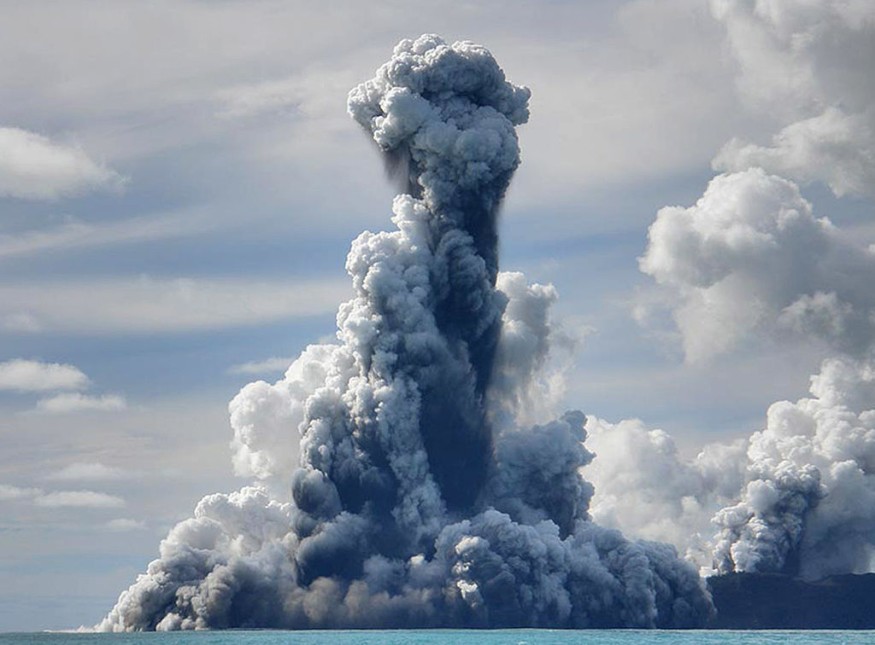The magnitude of the recent volcanic eruption in Tonga caught both the local population and scientists by surprise. Even those monitoring the underwater volcano Hunga Tonga-Hunga Ha'apai were unprepared for an explosion that would trigger a tsunami affecting the entire Pacific region. Does this mean underwater volcanic eruptions are more dangerous than those on land?

Challenges of Monitoring Underwater Volcanoes
The Hunga Tonga-Hunga Ha'apai volcanic eruption was described as a "once in a millennium" event, propelling gases and ash up to 39 kilometers into the atmosphere, akin to the eruption of Mount Pinatubo in 1991, and generating a shock wave heard in New Zealand and detected as far away as Switzerland.
This volcanic explosion might have been the loudest terrestrial occurrence since Krakatoa's eruption in 1883, with some experts deeming it "the biggest thing we have ever seen."
Despite the volcano's occasional activity in recent years, from moderate eruptions to local disruptions, the absence of warning raised concerns about the potential for other oceanic volcanoes to undergo similar large-scale eruptions.
While scientists deploy various measuring instruments, such as seismometers, gas samplers, and thermal cameras, to monitor volcanoes on land and deduce the likelihood of an eruption, it is often overlooked that the majority of volcanic activity on Earth transpires underwater.
Submarine volcanoes are widespread in the world's major oceans, and approximately 75% of Earth's magma output originates from mid-ocean ridges. Monitoring these underwater volcanoes is a considerable challenge, especially since many are located far from land and conventional observation methods are limited.
Detecting subtle temperature increases on the surface of a submarine volcano is one method to anticipate an impending eruption, although this can be challenging as the heat signatures are usually only visible at the sea surface when the volcano is already erupting, rendering it too late for early warnings. To gain a better understanding of submarine volcanoes, scientists often need to take a broader perspective.
READ ALSO : Hunga-Tonga Eruption: Strongest Volcanic Explosion of the Modern Era Based on Magnitude, Speed
What Happens When Underwater Volcanoes Erupt?
Underwater volcanic eruptions occur beneath the ocean's surface, ranging from minor events with minimal environmental effects to major eruptions reshaping the seafloor and causing tsunamis, involving complex interactions among magma, water, and the seafloor. Below are what could result from these eruptions:
- Submarine volcanic eruptions have the capacity to create new land, including islands, as lava accumulates above the water's surface, contributing to the formation of volcanic archipelagos like the Hawaiian Islands.
- These eruptions can also lead to the emergence of hydrothermal vents, openings in the seafloor that release heated water and minerals, fostering unique ecosystems in the deep sea, including extremophile organisms adapted to extreme conditions.
- Underwater volcanic eruptions play a critical role in seafloor spreading at mid-ocean ridges, where magma from the mantle erupts along these ridges, generating new oceanic crust and causing the seafloor to spread apart.
- Submarine eruptions release gases like water vapor, carbon dioxide, and sulfur dioxide, which can dissolve in the surrounding seawater, potentially leading to ocean acidification and impacting marine life.
- Large-scale underwater volcanic eruptions can trigger tsunamis by displacing significant volumes of water or causing underwater landslides, presenting substantial risks to coastal areas and human safety.
- These eruptions can release substantial amounts of ash, aerosols, and gases into the atmosphere, potentially affecting Earth's climate by reflecting sunlight, cooling the planet, or causing short-term climate variations.
Ongoing research on underwater volcanic eruptions is providing scientists with a more profound understanding of the intricate geological processes involved and their effects on the Earth's oceans, climate, and biosphere.
RELATED ARTICLE:
Check out more news and information on Volcanoes in Science Times.












